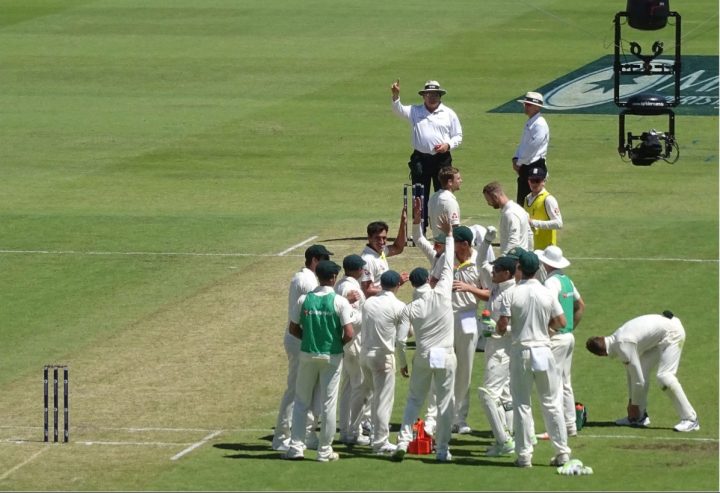England 293-7 (50 overs). Sri Lanka 297-3 (47.1 overs)
The mindset of England’s strategic think-tank has always intrigued me. They sit on the balcony making notes, stoking their chins, adjusting their shades, and they occasionally nod in agreement when England collect six singles off six balls.
Every time they nod, it seems to reaffirm (to them) the validity of their plans. They’re appreciating the beauty of seeing carefully conceived plans (apparently) coming to fruition in the middle. England’s mantra – whether it’s test cricket or ODIs –appears to be the necessity of meticulous preparation.
This approach mostly works well in test cricket. Occasionally it leads to some dumb headed selection policies – only a brain trust that believes totals are accumulated exclusively via occupation of the crease could ever conjure up a top three as mind-numbingly repetitive as ours – but overall the plan has been successful. England’s test team are a well oiled machine.
However, one-day cricket is a little bit different to test matches. It’s primarily about entertainment, skill and improvisation. Natural flair and ingenuity usually beats the formulaic and dogmatic.
England prepare feverishly for these contests – but attention to detail (what the management probably call the micro) is obscuring the bigger picture (the macro). When it comes to batting in ODIs, a team doesn’t actually need a concrete plan – just a loose one.
England’s approach to one-day cricket is a bit like all grand, all-embracing theoretic approaches: it fails because it’s inflexible; there are always events or circumstances which don’t fit into the overall framework.
Sh*t happens, and things rarely go 100% to plan; they can’t because there are too many variables in sports which involve, by their very nature, a certain element of chance. Sports are also played by fallible human being in changing conditions.
Cricket therefore, like life, cannot be planned to the nth degree. You can’t grasp opportunities if you’re sticking religiously to a pre-planned script or formula. What happens if opportunities arrive at the wrong, or unanticipated, time?
Last summer Sky ran a fly-on-the-wall series about Worcestershire’s T20 campaign; this included footage of team meetings in which Steve Rhodes, the head coach, outlined the side’s batting strategy.
Rhodes instructed his side to score X runs in the first 5 overs, another X in the next 5, and to reach a total of X with X overs remaining. He also reminded them (laughably I might add) not to lose X amount of wickets before launching their final assault; as if the batsmen were actually in control of when they got out.
Most of the Worcestershire players were lapping this up, but I couldn’t help but notice what I thought was a quizzical look on one of the senior player’s face. The player in question was Vikram Solanki, a cerebral bloke who can probably tell when a coach is feeding him baloney. Call it luck, intuition or whatever, but I wasn’t surprised he left for Surrey.
Rhodes is a guy I admired immensely as a cricketer, but his plan was always going to consign his team to a ‘bumpy’ ride. How on earth can a team rely on scoring X number of runs in a certain number of balls? Such plans don’t take variables into account, nor do they account for the actions of the opposition: what if, shock / horror, the opposing team’s opening bowler takes a few early wickets and concedes next to no runs? Bumpy’s plan is up the spout already.
I get the impression that Ashley Giles is shoving similar nonsense down England’s throats: you must score at four an over until the 40th over, keep wickets in hand, and then rely on Morgan, Buttler or Bopara to go berserk at the death and drag the team up to a respectable total.
What’s more this isn’t even a very good plan – even if it does occasionally work if absolutely everything transpires the way the management foresaw it; or, as happened against Australia, the bowlers manage to get the batsmen out of jail.
Essentially, England’s approach is an anachronism. No other team approaches one-day cricket this way anymore. Giles’ assumption that 260-290 is usually a winning score these days is flawed. The new fielding regulations have increased scores by 20-30 runs.
England’s plan basically only works on pitches that offer assistance to the bowlers (and a flurry of early wickets is likely). This is the only time that protecting the middle order is necessary. In high scoring games, on flat pitches, the tactic is redundant. Teams must be positive from the word go, and accelerate when the opposition is on the back foot. There is no time for meandering in ODI cricket.
Scoring 4 per over for 35 overs essentially squanders the majority of the innings, and puts the likes of Morgan and Buttler under too much pressure. Not being a batsman Ashley, you might not know this, but it really helps if a player has time to get his eye in before being asked to score 10-15 runs per over.
Being at the Oval yesterday was therefore an enjoyable, but rather frustrating experience. It was brilliant to watch Sangakkara score an excellent ton, but the Sri Lankan innings simply highlighted how England had beaten themselves too.
After the fall of Jayawardene’s wicket, Sri Lanka sent in Kulasekara to have a slog – knowing they had wickets in hand and a quick cameo would turn the game decisively in their favour. In other words Sri Lanka were flexible and creative.
What did England do in similar circumstances? We squandered our platform by deferring to a preconceived formula. After scoring four an over for the first twenty overs, without losing many wickets, we decided we’d score at exactly the same rate for the next fifteen overs. Sri Lanka looked delighted. After all, England’s plan was to score 10+ an over against the best death bowler in world cricket.
What I’d like to know is this: did England even consider adapting their plan to reflect the strengths and weaknesses of this particular opposition? Did they contemplate that scoring 10+ an over against Lasith Malinga might be a bit tough? If it wasn’t for Ravi Bopara’s last over heroics, our total would have been woefully inadequate.
When England started batting we all thought 270 would be a good score. However, when the ball didn’t move around much, and it became obvious that the outfield was fast and batting looked easy, we revised our assessment. It didn’t take a genius to work out that a total in excess of 300 would be required.
Basically – and we don’t expect some sort of award for this because it’s common sense – we revised our expectations based on what we saw. Unfortunately however, our batsmen looked unwilling, or unable, to do the same.
When England make plans at the start of an innings, the plan becomes sacrosanct. This is a failure of management, and quite frankly a failure of intelligence on behalf of our supposedly experienced players.
Not long ago England were ranked the number one side in ODI cricket. Since Ashley Giles took over we have won 4 and lost 6 games. There is a lot of work to do.
So how will England’s management react to this defeat? They’ll probably call up Nick Compton.
James Morgan










Well said, James. In fact everything you say is what I am too lazy to write. I loathe the rigid, pre-programmed England – very frustrating and dull. Why does the very average Bresnan always get a game?